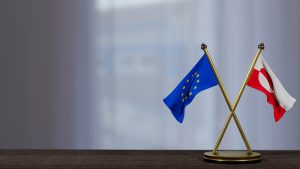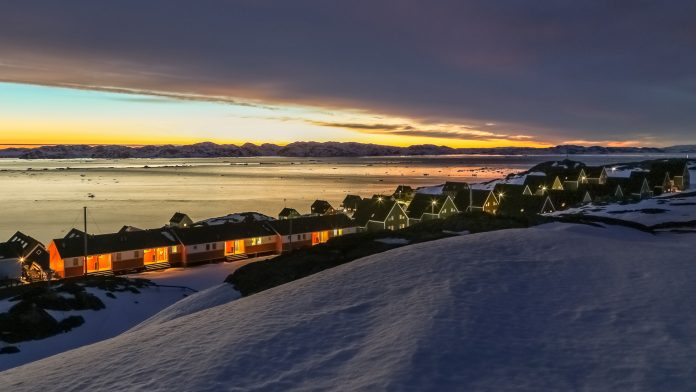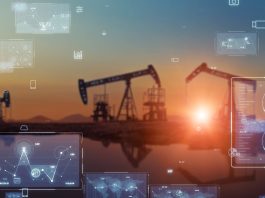The European Commission’s new office in Nuuk marks an important milestone in the EU-Greenland partnership – supporting Greenland’s economy and strengthening critical raw material supply chains.
Greenland, a European Union (EU) overseas territory, has long enjoyed a close and unique relationship with Europe. The latest step in this partnership is the opening of an EU office in Nuuk, marking a permanent EU presence in Greenland. This has been accompanied by two co-operation agreements, committing a total of almost €94m to support Greenland’s education sector and sustainable development.
This collaboration in Greenland is part of a wider effort to support partner countries in the green transition. The EU is implementing its Global Gateway strategy to promote and enable sustainable growth worldwide by investing in economic recovery and strengthening global supply chains. In addition, Greenland also forms a crucial aspect of the EU’s Arctic strategy, which recognises the region’s importance and susceptibility to the effects of climate change.
The partnership will use the €71.25m allocated for Greenland’s Education programme to upskill the workforce, with a special emphasis on vocational education. Supported by the €22.5m Green Growth programme, the EU hopes to develop key green industries and diversify the critical raw material (CRM) supply chains crucial to sustainable development.
Following the opening of its EU office in Nuuk, The European Commission (EC) discusses the significance of these recent developments for Europe’s critical minerals strategy and its mutually beneficial potential.
Is the EU prioritising the extraction of any particular critical raw materials in Greenland?
Greenland’s economy is currently dominated by fishery. It now seeks to develop its mining sector to diversify the economy, increase income to the treasury, create job opportunities, involve local businesses in providing services to this industry, and strengthen overall competitiveness.
The high resource potential for CRMs and other raw materials in Greenland, combined with the EU’s demand for minerals and expertise in prospecting, exploration, extraction, processing, and refining, makes a solid base for the strategic partnership on sustainable raw material value chains between the EU and Greenland and supports the development of Greenland’s mineral resource sector as a future supplier of CRM and other raw materials to the EU.
Of the 34 CRMs identified by the Commission as strategically important for Europe’s industry and the green transition, 25 can be found in Greenland. Of these, REEs, graphite, platinum group metals (PGM), titanium, tantalum, niobium, hafnium, and strontium show the highest potential. Other important raw materials include molybdenum and zirconium.
There is no specific prioritisation from the European Union perspective. The EU is working closely with the Government of Greenland (GoG), financial institutions, and the private sector to identify projects that could benefit both the EU and Greenland.
How do you balance the need for Greenland’s critical raw materials with mining’s environmental impact?
The environmental impact assessment for mineral exploitation in Greenland is a compulsory requirement for all potential exploitations in Greenland. The purpose of the assessment is to ensure that such operations are carried out in accordance with local law and good international practice and in a safe and environmentally acceptable manner.
The regulatory framework in Greenland builds on the protection of the environment, climate, health, and safety, and the project promotes the need to carry out environmental and social impact assessments. The authorities both evaluate these assessments and conduct public hearings and meetings in the nearby settlements and towns before the Government approves them.
The raw materials partnership will contribute to developing sustainable projects along the raw materials value chains and benefit both parties. It ensures that Greenland’s resources underpin sustainable, fair, and inclusive socioeconomic development following the strictest environmental, social, and governance (ESG) standards while simultaneously enabling the EU to deliver on its ambitious Green Deal, empowering the green and digital transitions in both regions. The environmental impact of raw materials exploitation will be pushed to the absolute minimum.
This approach will create value for both the EU and Greenland by diversifying Greenland’s economy, creating jobs, opening new opportunities for local businesses, and driving sustainable economic growth.
Can we expect to see the development of processing and recycling facilities in Greenland to minimise emissions and tackle mining waste?
The partnership concerns raw materials along the entire value chain from prospecting to end product, with a special focus on prospecting, exploration, extraction, processing, and refining CRMs.
Any processing and/or recycling in Greenland must follow the legislative framework established by Greenland. The European Union is committed to promoting high environmental, social, and governance ESG standards for the entire CRM value chain, including processing and recycling.
At this stage, the EU has no ongoing or planned projects. The EU and Greenland have been maintaining a dialogue on raw materials for several years (see https://ec.europa.eu/commission/presscorner/detail/en/MEMO_12_428). However, no concrete investment project has materialised until now, mainly because of the relatively high market entry costs involved.
How does the EU intend to strengthen the clean energy supply chain in the Arctic and implement clean energy infrastructure?
Greenland is already generating around 70% of its energy from hydropower. The ambition is to make the public utility supply 100% renewable by 2030.
The European Union is committed to supporting Greenland in this engagement by offering expert advice, sharing expertise, and facilitating investments in green energy supply. In particular, the EU will support Greenland in deploying clean energy infrastructure to extract and process mineral resources.

How will the EU address the challenges of Greenland’s existing infrastructure and conditions when developing its raw materials supply chain?
The EU is committed to supporting a public assessment of Greenland’s potential for supplying CRMs and promoting the use of clean energy for the extraction and processing of CRMs in Greenland.
Greenland’s transport infrastructure is primarily based on seaways instead of highways and railways, and the fjords may ease access to many mine sites for ocean-going cargo ships and bulk carriers. Mines in Greenland should most often be seen as satellites supported by Greenland’s basic national infrastructure – such as the new harbour in Nuuk completed in 2017, two new international airports under construction, and broadband satellite internet services. New initiatives include renewable energy for mines.
The MoU for the partnership was signed at the end of last year. We have already started working together on the ground, with business matchmaking events, supporting access to finance, and enhancing geological knowledge and data of mineral resources – these are exchanges that will continue.
As we move ahead, further investment will be needed, and access to finance will be secured. This includes investments in infrastructure for raw materials projects, capacities, and skills along the raw materials value chain, and research and innovation. Many actors will be needed, with the European Financial Institutions taking the lead.
In terms of supporting sustainable development in Greenland, which sectors are facing a skills shortage?
Greenland lacks both a skilled and, to a certain degree, an unskilled labour force. The EU has been trying to address this challenge by, for example, improving the level of education and quality of teaching.
The EU co-operation has almost exclusively focused all its support on this sector for years (+/- €600m since 2007). While the low unemployment rates are good for job seekers, it is also an indicator that there is an acute labour shortage, manifested as well by an increase in the number of foreign nationals of working age to 1800 persons in 2023. Labour market pressures are greatest in Nuuk (where the trend toward a greater concentration of the population in the capital continues). In contrast, unemployment continues to run high in South Greenland and the East Coast.
Does Greenland’s population size present a challenge to meeting demand in these sectors, and if so, how?
A well-educated and skilled labour force is the key prerequisite for development, green and inclusive growth in emerging sectors and a sustainable economy at a local level. This is why education remains an important area of EU-Greenland co-operation. The EU and GoG are working together to identify areas where EU support could be instrumental in supporting both the existing and emerging needs of the Greenlandic economy and society.
Until recently, education was the only sector (except for fisheries) which was supported by the EU in Greenland. This support has traditionally taken the form of sector budget support. In the first phase of the Greenland Education Programme (2007-2013), emphasis was put on vocational training, the acquisition of real qualifications for jobs requiring skilled persons and real competence courses for unskilled persons. In the second phase (2014-2020), emphasis shifted on to pre-school and elementary school systems, alongside continued support for vocational education and training and the post-elementary school system in general.
The most recent programme, concluded in 2023, achieved progress, among other issues, on using IT solutions to respond to the teacher shortage, better sector coordination, and fostering innovative skills.
What are the challenges associated with implementing upskilling programmes in Greenland?
The EU is supporting Greenland in implementing education/vocational training schemes that respond to the existing and emerging needs of the Greenlandic economy and local communities. The EU has an unparalleled capacity to combine expertise and best practices and offer tailor-made training and upskilling programmes in several areas.
Improved vocational education will be crucial for the diversification of Greenland’s economy and the development of its private sector. There is a significant bottleneck with regard to the number of apprenticeships available for students. It is an issue which is tackled by legal provisions compelling businesses and institutions to offer apprenticeships. Greenland’s new macroeconomic policy, adopted in November 2023, puts an emphasis on improving access to vocational education and bringing young people outside employment and education back into training for in-demand professions.
This is why, building on previous achievements and lessons learnt, the new (2023) EU support programme will indeed focus on re- and up-skilling, improved curricula for vocational education, and student wellbeing, in line with the upcoming 2024 Greenlandic strategy for education. Implementation will start in the first half of 2024.
Upskilling the workforce both in the EU and Greenland has a number of advantages, ranging from economic (e.g. increased productivity) and societal (better job satisfaction) to reputational (improved business climate/attractiveness of the country, long-term economic development).
How will the Nuuk Office solve any logistical challenges associated with Greenland’s status as an EU Overseas Country and Territory?
The EC office in Nuuk aims to facilitate the management of the Union’s support to Greenland as well as further strengthen the partnership between the Commission and the authorities of Greenland, including through co-operation and dialogue in areas of common interest. The opening of this office is also proof that the EU is willing to enhance its presence in Greenland and the Arctic to increase our visibility in this part of the world and contribute to bringing the EU and Greenland people closer together.
What are the projected timelines?
The implementation of the new education programme has already started. Although the implementation of the brand-new green growth programme will officially commence in Spring 2024, the GoG and the EU have already begun working on the identification/implementation of concrete areas of co-operation in this area.
Please note, this article will also appear in the 18th edition of our quarterly publication.









